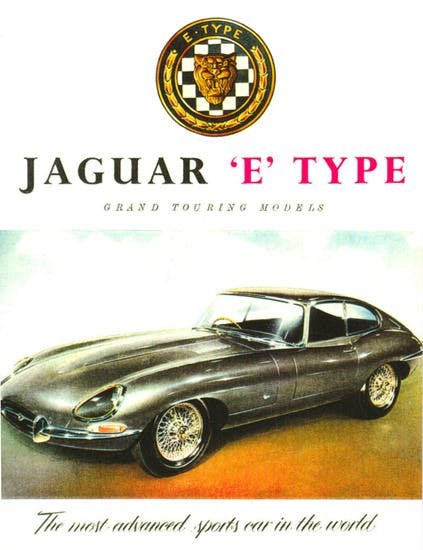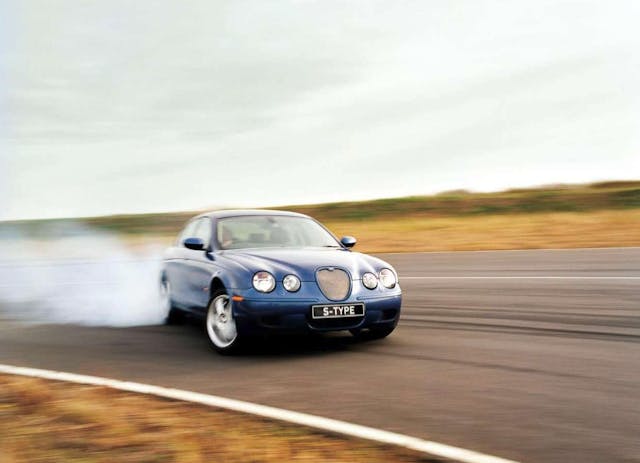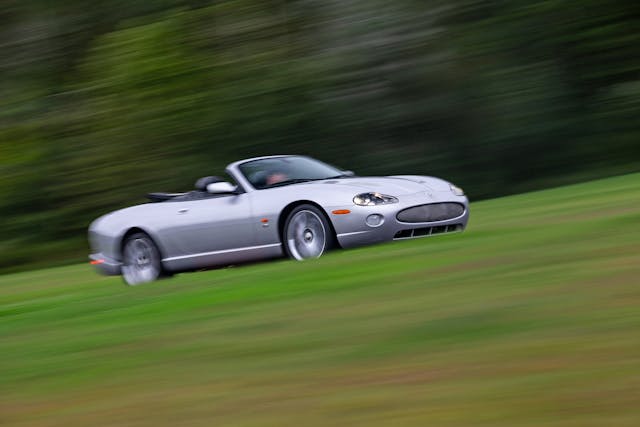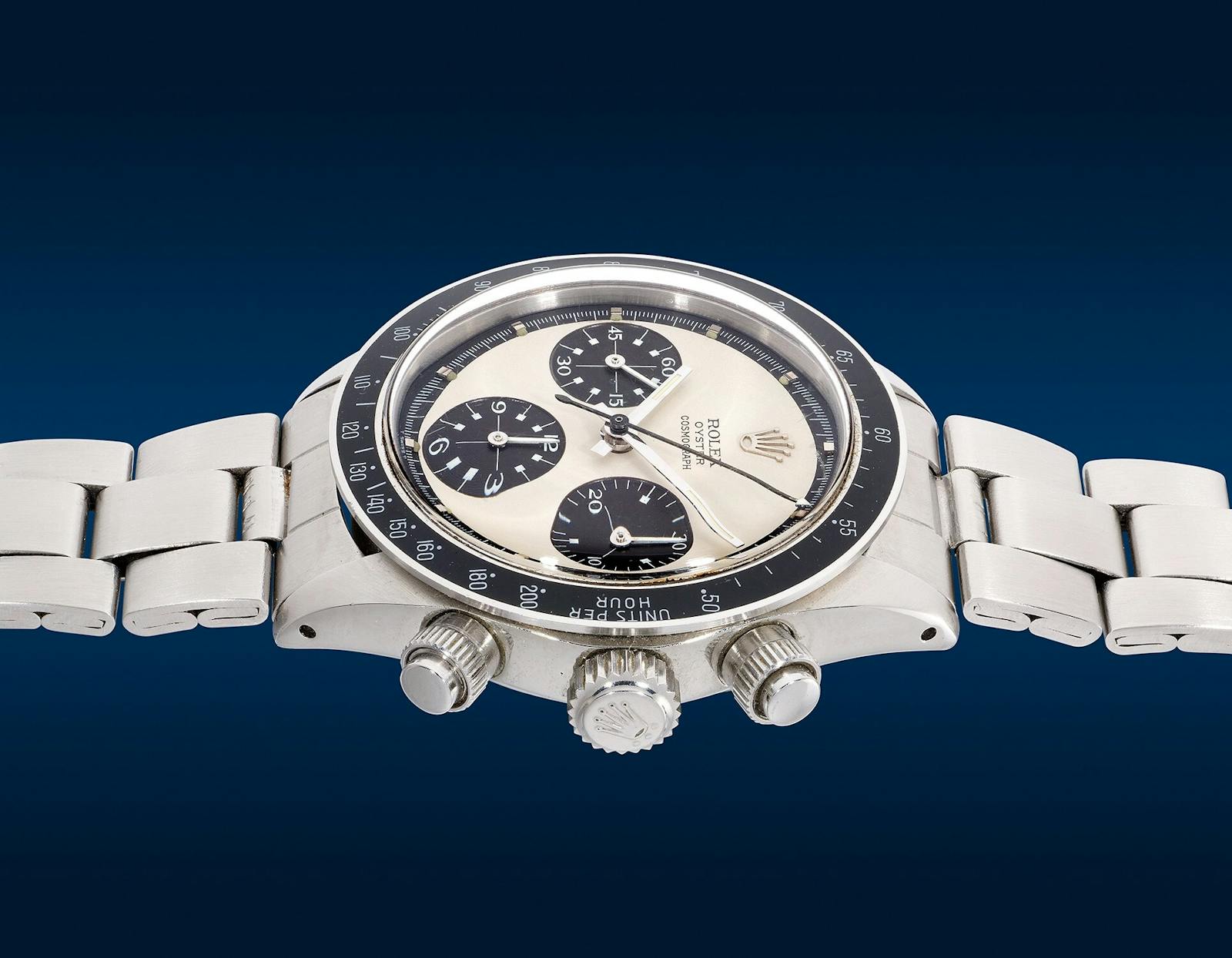Do Classic Jaguars Face a Dark Future?
Jaguar, as a brand, is on the rocks. That’s the growing sense in the collector car industry, at least. For decades, classics like the XK 120, XK 140, XK 150 and E-Type have been mainstays for dealers, brokers, and buyers, but lately they don’t seem to generate the same market excitement they once did. They are getting harder to sell, and over the past five years many prices are either stagnant or decreasing.
Of course, the market is generally softening from its pandemic-era heights, and this is compounded by demographic shifts that are beginning to favor Radwood-era (1980s and 1990s) cars over their predecessors. This isn’t just affecting classic Jaguars—many carbureted V-12 Ferrari road cars, long-hood (1973 and earlier) Porsche 911s, and Austin-Healeys are also seeing relative slumps. But a surprising number of cars from this era are also seeing an uptick in their values. Porsche 356 coupes, C2 Corvettes generally—and ’63 Split-Window coupes especially—and V-6 Ferrari Dinos have increased in value anywhere from 20 percent to 90 percent over the last five years.

So why does the brand, traditionally so prevalent in the hobby, seem to be getting left behind? This is doubtless a complex question, but in the case of Jaguar, several factors appear to be conspiring to collectively dampen interest in what are some of the greatest sports cars of all time.

Promising Starts
Sir William Lyons, who founded Jaguar between the world wars, was famously good at commercializing genuinely compelling products at prices so low they were scarcely believable. Jaguars were world-class cars, delivering sensational looks and performance while consistently pushing cutting-edge technology and selling in much higher volume than other cars that offered the same. Their on-track record drove this point home: Jaguar won the 24 Hours of Le Mans five times in the 1950s (and twice more after that). Only Porsche, Audi, and Ferrari have won Le Mans more times than Jaguar.
Much of that early success came down to engines. In 1948, when everyone else was still essentially warming up their prewar designs, Jaguar released an all-new car, and not only that, it was powered by an engine with twin overhead cams. The car was the XK 120, and its straight-six “XK” engine was so advanced that variants remained in production for over 40 years. Meanwhile, the XK 120 was so good that in its competition trim as the C-Type, it won Le Mans twice. With the same mechanical bits developed further and fitted to a new, even more stunning, more aerodynamic semi-monocoque body in the D-Type, Jaguar won Le Mans three more times.
In 1961, four years after its last victory of the 1950s, Jaguar was selling all that Le Mans–winning goodness to the public in another groundbreaking and gorgeous new sports car, the E-Type. It was even more advanced, thanks to the addition of independent rear suspension. A few months after the E-Type arrived, Jag put those same technical components into a full-sized sedan, the Mark X.

It’s difficult to overstate the impact of the E-Type. With semi-monocoque construction, a twin-cam engine, four-wheel disc brakes, and fully independent suspension, it was, as Jaguar pointed out in advertisements, the most advanced sports car in the world. No other single car combined all these characteristics at any price: not Porsche, not Mercedes, not Maserati, not Aston Martin, not even Ferrari. And the price of the Jag? Around £2000 in its home market (a relatively modest $46,600 in today’s dollars). That meant it was 80 percent the cost of a Porsche 356, half as expensive as an Aston Martin DB4, and a third as much as a Ferrari 250. It was quicker, faster, and better looking than almost all of them, too. Even Enzo Ferrari famously lavished praise on the car upon its debut, and decades later, an E-Type roadster joined New York’s Museum of Modern Art.
With credentials like these, it’s no surprise that Jaguar sold more than 72,000 E-Types during a 14-year production run. The cars peaked in the 1960s, before American regulations started strangling performance and spoiling their looks. Even so, Jaguar was on top of the world during this period, and it wasn’t only thanks to the E-Type. Jaguar sedans had temptingly similar underpinnings to the sports cars, and if buyers thought those features were advanced in something like the E-Type, they were downright space-age in a sedan. Vast expanses of wood and leather epitomized British luxury, while beautiful and distinctive exterior styling and superb value for money gave four-door Jaguars a unique appeal that no other car in the world could quite match.

Changing Fortunes
And then, everything stopped. Not literally, but Jaguar’s evolution largely did. The 1970s saw the E-Type replaced by the XJS, which was fresh and contemporary but much more grown up. If the E-Type was a sports car with the heart of a Le Mans racer, the XJS was the European version of a personal luxury car. The seminal XJ6 also arrived in 1968, right-sizing the Jaguar sedan formula and setting the world alight, but it remained in production for a full 18 years before being replaced by a car that was really just a 1980s take on the exact same concept. At the corporate level, getting caught up in the woes of British Leyland in the 1970s and eventually being bought by Ford in 1990 did Jaguar few favors.
Little had changed by the early 2000s. Jaguars, despite having contemporary technology under the skin, offered an aesthetic experience that had become anachronistic. They felt like a caricature of olde-worlde England, which gave them virtually no sizzle to youths and younger buyers, who preferred the forward-looking modernity of German or Japanese luxury cars. If those cars were modernist houses of concrete and glass, then Jaguars were Tudors with thatched roofs.
Jaguar set out to reinvent itself by building a new, modern identity starting with the new XF in 2007, followed by other sedan models, entries into the lucrative SUV market, and a new sports car, the F-Type. These cars simply never resonated completely with buyers. Their identity wasn’t strong enough, the engineering and reliability not good enough, and the interiors not nice enough. Unlike Land Rover, who has so effectively modernized the Range Rover while somehow preserving a feeling of Britishness, Jaguar’s post-millennium effort at rebirth lacked the relevance and raw desirability to drive consumers into showrooms in substantial numbers.
Looking forward, it’s unclear (especially given current consumer preferences) whether Jaguar’s assertion of an all-electric future will help or hurt the values of its classic models. Its aspirations to head further upmarket may help the brand’s financial viability, but the impact of any future success on the marque’s past models will depend wholly on whether its execution inserts the kind of passion that brings enthusiasts into the fold.

Struggling for Relevance
Modern consumers have known only two Jaguars: the charming but backwards-looking neo-classical version of the 1980s–2000s, and the modern but ultimately uninspiring rebirth that began in 2007. Unless they consciously seek out classic cars, these buyers won’t be familiar with the greatest Jaguars of all: The ones that did not look fondly toward the past or unconvincingly toward the future, instead descending directly from Le Mans race cars and offering the world’s most advanced motoring experience in a competitively priced, beautiful, contemporary, and authentic wrapper.
One of the troubles for Jaguar’s classics is that their collectibility (and that of all collector cars) is driven by their relevance to enthusiasts. Not enough of today’s enthusiasts associate Jaguar with their core automotive memories—the kind that would drive them to loop back and buy something from a brand they desired in their youth.
BMW provides a stark contrast—the brand retains enthusiastic and growing appeal among collectors. Twenty years ago, a new 7-Series costs much more than an M3. Today, the M3 is worth more. Why? Because many more enthusiasts want a 2004 M3 than want a 2004 745Li. When cars become old enough, the market for them is composed almost exclusively of enthusiasts.

Meanwhile, few Jaguars have set enthusiast hearts alight, even looking back 50 years. There are of course evangelists of the XJS, XK8/XKR, and XJ40/X300/X308 generations of the XJ, and likely other models besides. But we are small in number and a little bit weird. There aren’t enough of us to form an entire new generation of Jaguar fans, especially when other brands have done such a good job of connecting their enthusiast-driven identity to the mainstream. Think Porsche, Ferrari, Lamborghini, and Land Rover.
As for the classic Jaguars of the company’s golden era, their lack of connection to today’s enthusiasts is compounded by the fact that they sold so well when new. Corvettes of the same period sold in large numbers. Porsches and Alfa Romeos did, too, albeit to a lesser extent. But virtually every model of Ferrari, Aston Martin, and Maserati from the 1950s to early 1970s ranged from a few hundred to barely a few thousand units. Given how comparatively abundant Jaguars are, it takes a larger number of buyers to sustain appreciation, and there just aren’t enough such people in the current market. If they had made a few hundred E-Types or XKs, they’d all be worth at least a million dollars. But they didn’t, and they aren’t.

The Silver Lining
While it’s disappointing to see Jaguar values languish, there are upsides. What made them so compelling against their competitors in the 1950s and ’60s is still true today. They represent great value for money given their intrinsic characteristics, and softening prices make them an even greater value.
If you’ve dismissed Jaguars as “old people cars,” take a closer look at them. And if you’ve seen the light and own one, share it with as many people as possible. Let them hear it, ride in it, and form those memories that will reshape them from a car enthusiast into a Jaguar enthusiast. If Jaguar as a company can’t endear itself to a new crop of car fans, it’s up to those of us who know better to do that work instead.
Regardless of their values, the experience provided by these cars has lost none of its appeal. To look at, ride in, or drive an E-Type is one of motoring’s great pleasures, and it happens to be one of the precious few automotive experiences that is getting more, rather than less, financially accessible.
Derek Tam-Scott is a used car salesman and car content grump.
***
Check out the Hagerty Media homepage so you don’t miss a single story, or better yet, bookmark it. To get our best stories delivered right to your inbox, subscribe to our newsletters.



HAGERY: DO SOMETHING ABOUT THE WORD-WRAP PROBLEM. COMMENTS HERE ARE ALMOST IMPOSSIBLE TO READ!!!!
It is truly terrible.
What a sad eulogy for Jaguar. I have known and loved Jaguars my entire life and I am from the Silent Generation. Reliability, expense, image or resale were never ownership considerations for me. I saw my first XK-120 race at Put-In-Bay in 1957 and had to own one. I learned their mechanical/electrical eccentricities just as I did for American cars of the 50’s and 60’s. They were special. The smell of the leather, the wood and their unique design and road feel could not be equaled by anything on the road. My love affair has still not ended and I have a XK8 in the garage now. I love it just as much as my first XK-120. I don’t know Jaguar’s future but I sincerely hope for the best. The automotive world will be a poorer place without the Cat.
The cars haven’t changed, the people who buy them have. There are those who love laying hands, part of the love I & others have for these wonderful, character filled pieces of art . If you are primarily today’s male, you love looking at the art, not the physical aspect & responsibility that comes with ownership.
I still have my 1956 Jaguar XK-140 Drophead Coup which I bought when I was in college for $1,000 in 1963; nobody would buy it for $750 when I was in the Army in 1966 so I kept it. When I brought it down to Florida in the late ’70’s it was at a garage having some work done to it and somebody called me and asked me if I would sell it for 14 and not keeping up with the market, I asked him 14 what (thinking was 1400) and he said $14,000. After I checked on prices, I said no and I kept it. Fast forward to now. About five years ago I was going to sell it because the clutch was too heavy and with a bad knee I had a problem shifting; I opted for a knee replacement and I still have the car which is now being restored. At the same time, I bought a 2007 XK convertible, low mileage, beautiful car but I have an easier time finding parts for the ‘56 than for the ‘07 which it appears are no longer made.
I have owned a series 1 E Type for 41 years. It is one of the greatest vintage sports cars ever made. They unfairly got a bad reputation for unreliability. The drivetrain won 5 lemans, the cars are beautiful, fast, and handle great. I have a 52 xk120 built out like a competition car. When I take it to car shows, it’s mobbed. Always draws a big crowd. Obviously, it drives no where near as well the E Type. If they hadn’t made over 70,000, the EType would be a million dollar classic
True
I am a Porsche owner because of Jaguar. Had a friend with an older Brother. The Brother had a girl friend that had a Jaguar. My friend and I were not of age yet to have driver licenses and the older brother took us on a show off ride in his girls friends Jaguar. I have no idea what model it was and my memory may be off. This was around 1957 or 1958. I remember it being a white curvy sedan with full leather back seats. I was impressed for life. Especially after spending my youth in my fathers 1949 Kaiser and 1953 Nash. European sports cars became my obsession, even to this day. Never ever understood or gave a look at USA Muscle.
This may be the outlier in your analysis. My 30 year old son has access to the cars in my collection, a 1968 Camaro 396 SS/RS convertible, or a 1970 Morgan Competition 1600 Crossflow 4/4. or a 1966 Aston Martin DB6 Vantage or a 1970 Jaguar e-type. He is adamant that he wants the Jag when I leave the living. As a 1970 e-type it has the safety systems to provide some protection, collapsing steering column. breakaway mirror, real seats and belts, anti-spring door locks, etc. It also starts, runs, and doesn’t leak.
Too bad the reputation was hampered by early models, It illustrates the difference in 1960;s automotive companies in the UK and America. In small volumes your test bed is the customer and you evolve based on what happens in real use ( it took Aston till the later DB5’s to get it right and Jag till the Series 2 e-type, if you are making 350.000 per year like the 68 Camaro/Firebird you test the hell out of everything to avoid warranty problems.
I guess it all depends on your definition of classic jags. The author may be right when it comes to XKEs and others costing $100 k. However, I disagree with his stance on XK8s and Series 1-3 XJ6s. These are beautiful cars that you can still get in good condition for $10k (or less than the price of a used Toyota or Honda). They’re not likely to go down in price and may continue to go up. That said, financially, we’re probably all better off to just buy T-bills.
I have some money invested in Long-term Treasuries in my IRA. They have consistently lost over 5% in value each year for the last five years. I am selling them to fulfill my RMDs. By the end of this year, I will not own any. There are better performers than “investing” in classic cars, but T-bills ain’t it.
It would be great if less of the discussion around interesting old cars, technically or performance oriented, was not about MONEY. Who really cares if 1950’s and 1960’s Jags are losing value. Or how MANY were made. The market will adjust and just like new cars, it’s likely every one for sale will find a new home, a new enthusiast who enjoys it. I bought my early 1961 E Type almost 25 years ago for $20,000 and have put about $20,000 into it for mechanical rebuilds, engine, rear end, front end, etc. It’s FAR more technically interesting, and much faster, than any but the rarest 356’s, Vettes or Healeys of the era, and handles pretty well. If you just like to gawk, the engine compartment and dash will satisfy.
Agree about gawking. That engine is a visual work of art.
I have coveted Jag XKE 6 or 12 ragtops since I was 6 or 7, seeing one driven near Woodstock NY. Although I have never owned one of them (yet), I fell more in love with the affordable XJS Ragtop, (as well as every other car on the planet except the Simca), when I first saw a brand new one while serving in the Navy in Italy sometime in 1975…..I also love the XJ 6/12, Beleiving them to be the most stunning four door (2 door) design on the planet holding four adults. I have a few of them now, most have Chevy Small Block Motors, my own “custom rewiring” with electronics that work, fuel pumps that cost 50 bucks, and Holley or Rochester Carbs instead of the God-Awful stock fuel injection with the nightmrish plumbing and hose array that looks like a snake fight in a Raiders of the Lost Arc Movie….Although none are perfect cars, they are more realiable than the stock 40 year old versions, and I can fix em when they quit running with parts at any local auto parts store. Most recent monor Breakdowns have been stock British relays, poor relay socket connections….or crappy wiring and poor grounds ! Brakes are already good if maintained, and the interior is one of the best on the market. Window relays suck as does some of the other stock equipment, switches, relays, , but they are gorgeous cars, with world class interior and leather !HOWEVER prices are going to continue to go down for all of these, as my generation who coveted themare dying off. This is not an anomoly, take a look at Model A fords, Model T Fords, classic Cadillacs, and other 30’s and 40’s Classics as well as some 50’s and 60’s…. The “everyday guy” who loved cars is not reproducing their “Car-Guy” replacments. It saddens me that we are losing the future of old cars and classics to a generation of Uber riders and bicycle children, for now. We as a collector class of Car Folks, need to drive the hell out of the nice Jaguars and let the public see them. Jaguar is on the block now just like some of the old names we all use to love. I will continue to keep my eye open for a nice ragtop E-Type with the 6….and drive it like I stole it.
As a 49 year Jaguar owner( ‘56 XK-140 OTS and ‘60 Mark IX ), between the two cars, I have only been stuck once in all that time; not exactly supporting the tales of unreliability. That incident was the result of my own error and not the fault of the car. They have only always been maintained by myself with occasional help from a dear friend. You can learn to maintain these cars yourself which is something that many owners of more “ valuable” cars may not be able to say. My two cars are part of me. I don’t pay any attention to market trends which are irrelevant to me. After I’m gone, it will be all gravy for my kids who will attempt to find new, responsible, loving owners for these cars. That will be more important than the proceeds from the sales. In the meantime, they are in outstanding condition and are breathtakingly beautiful and a pleasure to drive and maintain.
Modern Jaguar faces a dark/grim future. Old classics will eventually find new owners. There is enthusiasm, just less willingness to purchase at current prices.
Could be that the relevance of the brand isn’t as viable with the ever shifting buying demographic. That 30 to 40 year window when the “I always wanted one of these as younger person, and now I can afford one”, window continues to shift. Like most brands, they’ve leaned heavily into SUV’s which don’t cast as broad a shadow as a car does, (how many SUV”S do you see at the race track?). So there just hasn’t been much lately in their lineup that excites.
Early “millennial” here, even though I hate to be grouped into that stereotype. I grew up loving the E-type with toy replicas and the posters on my wall. Reading this article got me excited, I went to eBay, and found that as expected they’re still out of my range. Bummer.
As a late boomer generation guy I dreamed of owning an E-type V12 one day, red, wire wheels whole package but it was beyondmy income. I finally became a jaguar owner about 5 years ago first with a beautiful crystal blue XFR 510hp supercharged 5L V8 and now with a beautiful fiorenza red soft top F Type R same engine but 575hp.. I love these beasts and the roar of the exhaust from the V8 when you unleash them. Somehow an Electric Jag doesn’t hold that same appeal. I need that engine roar, top down in a sunny day so as long as I can still get gasoline/petrol I’ll be old school and maybe if prices drop I’ll finally get my E-type collectors car